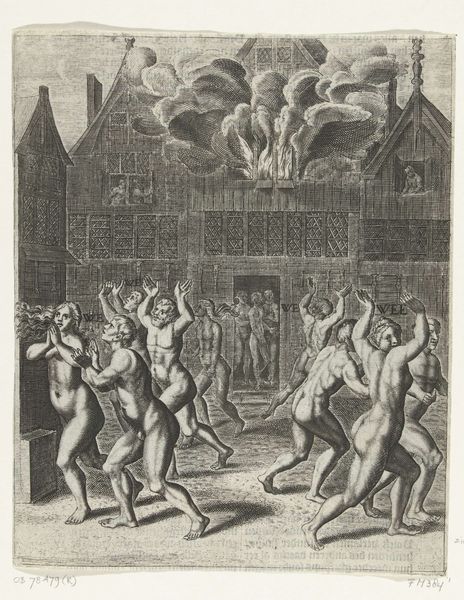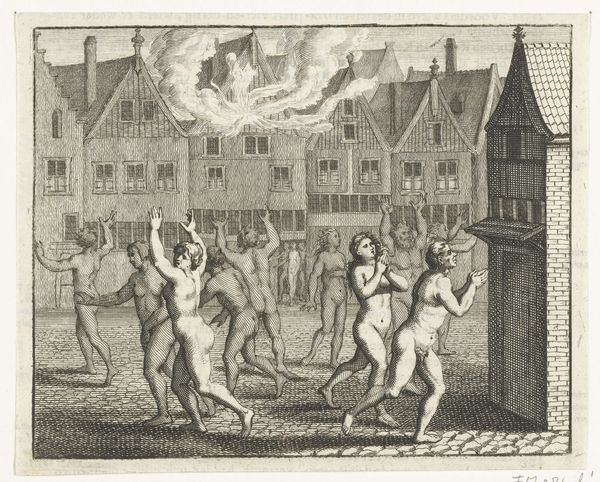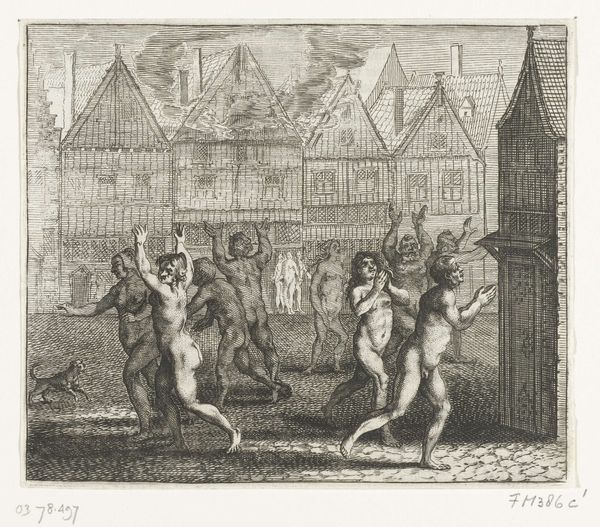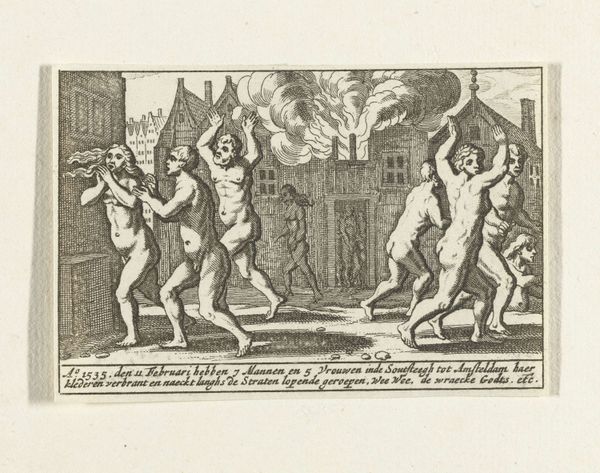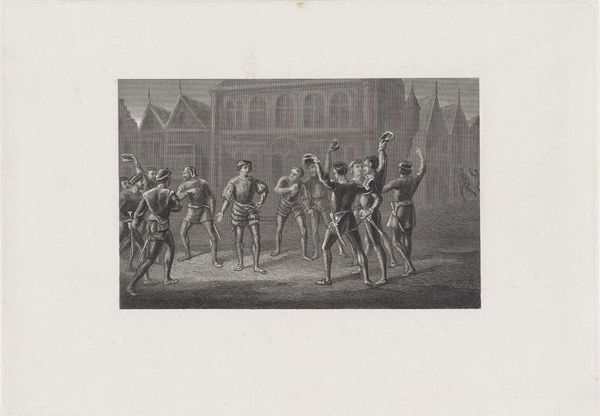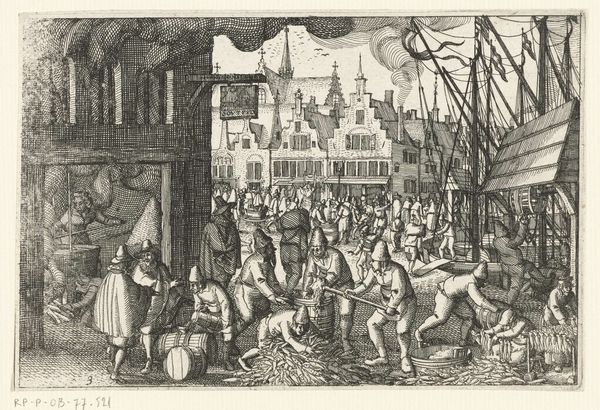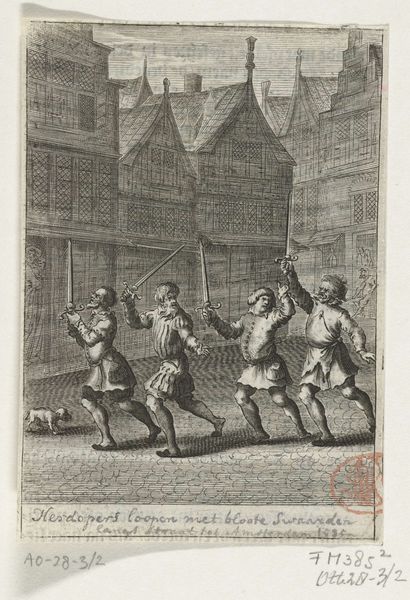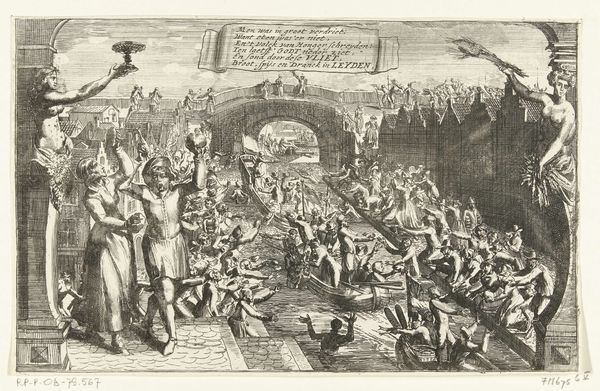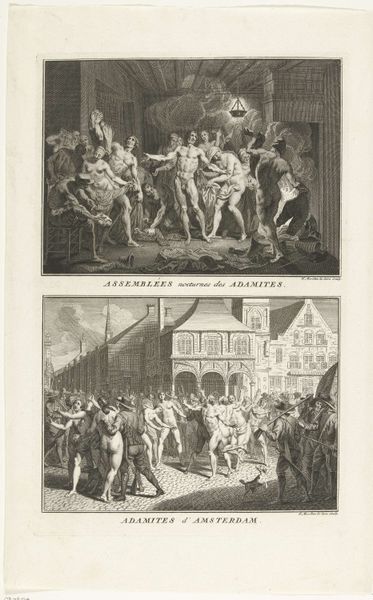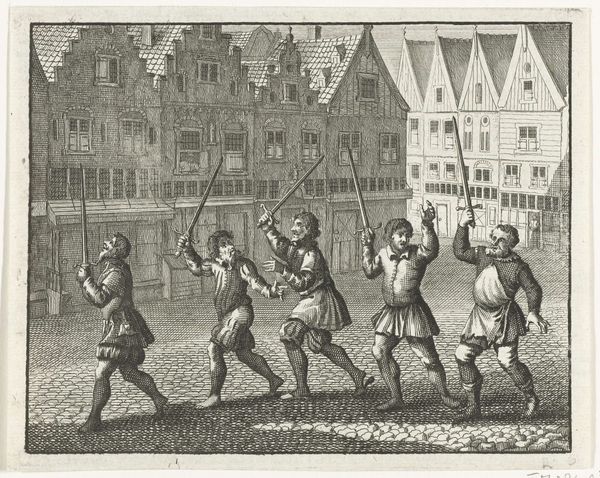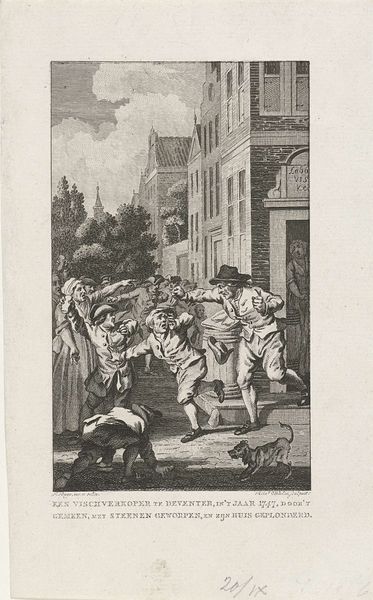
print, engraving
#
narrative-art
#
dutch-golden-age
# print
#
old engraving style
#
cityscape
#
genre-painting
#
history-painting
#
nude
#
engraving
#
realism
Dimensions: height 123 mm, width 156 mm
Copyright: Rijks Museum: Open Domain
Curator: This intriguing engraving, dated between 1650 and 1699, is titled "Naaktlopers te Amsterdam, 1535". The work comes to us from an anonymous artist, and renders a chaotic scene in what appears to be Amsterdam. Editor: My first thought? Panic! Look at the dynamism. The composition, with those frantic figures surging forward against a backdrop of burning buildings, screams chaos. What caused all this distress? Curator: Indeed, the artwork ostensibly depicts a historical moment: the Anabaptist riots. Understanding its making, its materiality, the work itself is a testament to printmaking's function as political propaganda and social critique. Engravings like these served to disseminate ideas, to literally inscribe a perspective into the popular consciousness through mass production and distribution of reproducible imagery. Editor: Notice how the lines of the architecture—those severe, unwavering verticals and horizontals of the buildings—counterpoint the organic frenzy of the figures. And what about the nudes themselves? The artist’s semiotic employment of nudity indicates both vulnerability, exposure, and potentially, spiritual purification given the Anabaptist context. Curator: Precisely! Moreover, in a capitalist frame, bodies are commodities. The figures represent the common citizenry of Amsterdam responding to historical unrest that posed a material threat to property and to social structures. Editor: The city burns, but the lines that build it do not yield! To that point, what are your thoughts on the technical skills? The density of hatching to create depth, the variation in line weight—it’s a masterclass in visual rhetoric through simple mark making. Curator: The economic aspect cannot be discarded: the paper production, the labor involved in engraving and printing, all speak to complex market relations in Dutch society. The engraving isn't merely aesthetic—it’s material culture speaking volumes about early modern capitalism and how artists responded to its challenges. Editor: So, beyond a frozen historical record, it echoes timeless artistic conflicts between the Apollonian drive toward order and the Dionysian embrace of chaos and life? Curator: Well articulated. It showcases historical unrest and, just beneath that, a record of labor and production involved in creating the artwork in the first place, while opening dialogue of economic systems involved during this historic unrest in Amsterdam. Editor: This close examination leaves me struck by its intricate dance of form and socio-historic meaning, it shows what true understanding can do to unlock new avenues.
Comments
No comments
Be the first to comment and join the conversation on the ultimate creative platform.
